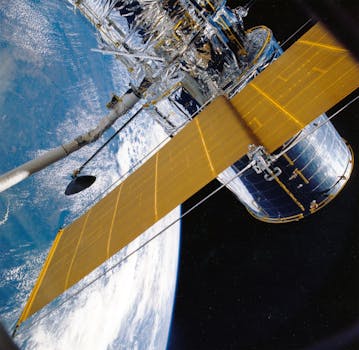The Rise of Mega-Constellations: Latest Updates in Satellite Telecommunications

The Rise of Mega-Constellations: Latest Updates in Satellite Telecommunications
Mega-Constellations, Satellite Telecommunications, the rise of mega-constellations is revolutionizing the satellite telecommunications industry, with thousands of small satellites being launched into low Earth orbit to provide global internet connectivity. This new era of space technology is being driven by companies such as SpaceX, Amazon, and OneWeb, which are investing heavily in the development and launch of mega-constellations. In this article, we will explore the latest updates in satellite telecommunications and the impact of mega-constellations on the industry.
What are Mega-Constellations?
Mega-constellations are large networks of small satellites that are launched into low Earth orbit to provide global internet connectivity. These satellites are typically smaller and less expensive than traditional geostationary satellites, and they are designed to work together as a network to provide high-speed internet access to remote and underserved areas. The idea behind mega-constellations is to create a network of satellites that can provide continuous coverage of the Earth, allowing for seamless communication and data transfer between different parts of the globe.
The Benefits of Mega-Constellations
The benefits of mega-constellations are numerous. For one, they have the potential to provide global internet connectivity to remote and underserved areas, bridging the digital divide and enabling people to access information and services that they previously could not. Mega-constellations can also provide backup connectivity in the event of natural disasters or other outages, ensuring that critical communication systems remain online. Additionally, mega-constellations can enable new types of applications and services, such as precision agriculture, environmental monitoring, and smart cities.
The Challenges of Mega-Constellations
Despite the benefits of mega-constellations, there are also several challenges that need to be addressed. One of the main challenges is the risk of space debris, as thousands of small satellites are launched into orbit, increasing the risk of collisions and the creation of new debris. Another challenge is the issue of spectrum allocation, as mega-constellations require a significant amount of spectrum to operate, which can lead to conflicts with other satellite systems and terrestrial networks. Finally, there are concerns about the environmental impact of mega-constellations, including the potential for satellites to interfere with astronomical observations and the creation of new forms of space pollution.
The Future of Mega-Constellations
Despite the challenges, the future of mega-constellations looks bright. Companies such as SpaceX and Amazon are continuing to invest in the development and launch of new satellite systems, and governments around the world are beginning to take notice of the potential benefits of mega-constellations. As the technology continues to evolve and improve, we can expect to see new applications and services emerge, from satellite-based 5G networks to global navigation systems. With the rise of mega-constellations, the satellite telecommunications industry is on the cusp of a new era of innovation and growth, and it will be exciting to see how this technology continues to shape the future of our world.




